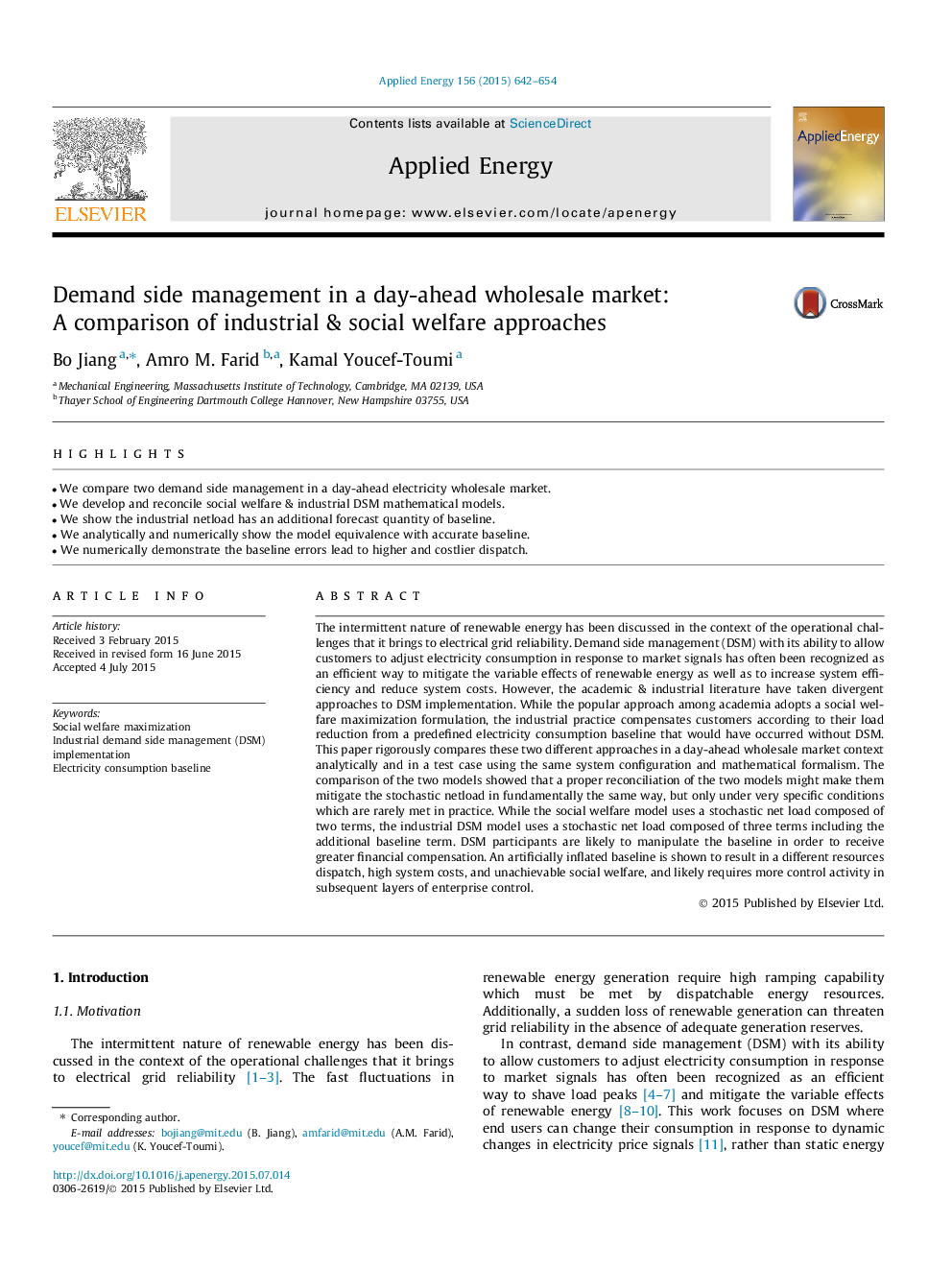| Article ID | Journal | Published Year | Pages | File Type |
|---|---|---|---|---|
| 6686333 | Applied Energy | 2015 | 13 Pages |
Abstract
The intermittent nature of renewable energy has been discussed in the context of the operational challenges that it brings to electrical grid reliability. Demand side management (DSM) with its ability to allow customers to adjust electricity consumption in response to market signals has often been recognized as an efficient way to mitigate the variable effects of renewable energy as well as to increase system efficiency and reduce system costs. However, the academic & industrial literature have taken divergent approaches to DSM implementation. While the popular approach among academia adopts a social welfare maximization formulation, the industrial practice compensates customers according to their load reduction from a predefined electricity consumption baseline that would have occurred without DSM. This paper rigorously compares these two different approaches in a day-ahead wholesale market context analytically and in a test case using the same system configuration and mathematical formalism. The comparison of the two models showed that a proper reconciliation of the two models might make them mitigate the stochastic netload in fundamentally the same way, but only under very specific conditions which are rarely met in practice. While the social welfare model uses a stochastic net load composed of two terms, the industrial DSM model uses a stochastic net load composed of three terms including the additional baseline term. DSM participants are likely to manipulate the baseline in order to receive greater financial compensation. An artificially inflated baseline is shown to result in a different resources dispatch, high system costs, and unachievable social welfare, and likely requires more control activity in subsequent layers of enterprise control.
Keywords
Related Topics
Physical Sciences and Engineering
Energy
Energy Engineering and Power Technology
Authors
Bo Jiang, Amro M. Farid, Kamal Youcef-Toumi,
